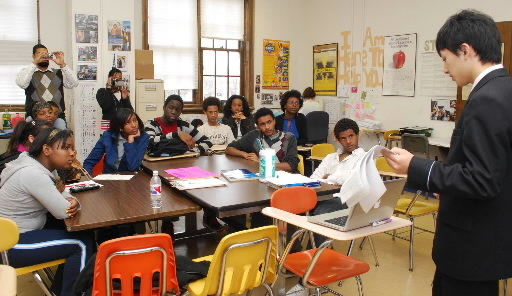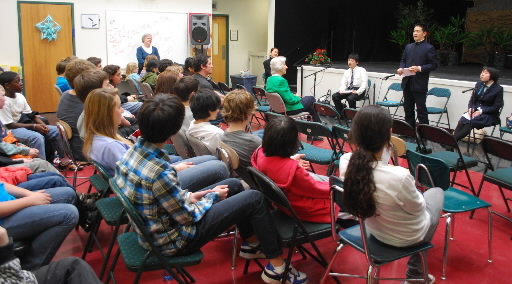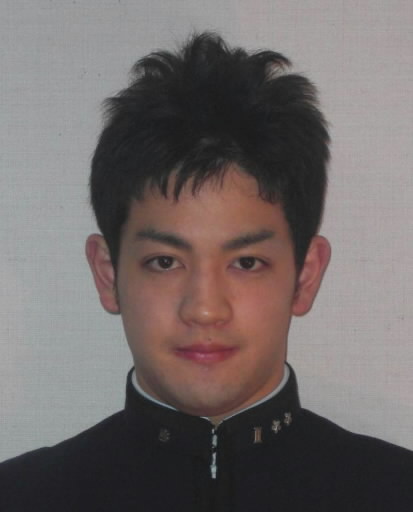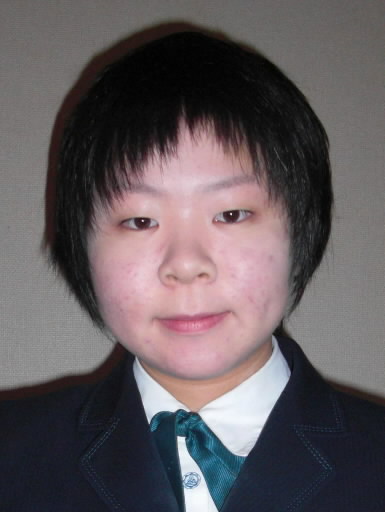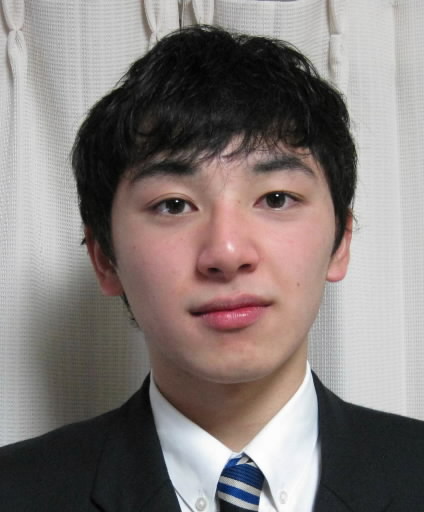Hiroshima high school students visit U.S., share wish for nuclear abolition
Apr. 11, 2010
by Junji Akechi, Staff Writer
Three members of the "No Nuke Network: Students of Hiroshima Against Nuclear Weapons," a group that campaigns for the abolition of nuclear weapons, traveled to Washington, D.C. in late March. The students who made the trip were: Yuji Kanemori, 17, a third-year student at Hiroshima Gakuin; Tomoko Takamoto, 17, a third-year student at Hiroshima Jogakuin; and Yuki Okada, 16, a second-year student at Shudo High School. They visited two schools where they described the horrors of the atomic bombing and discussed war and peace with other young people their age. The Chugoku Shimbun followed the students over the course of their week-long visit to the United States as peace ambassadors to observe their discussions and reactions.
One of the schools the students visited during their stay was the Friends Meeting School, a private school in Maryland, about a one-hour drive from Washington, D.C.
The three students explained that approximately 140,000 people are believed to have died in Hiroshima by the end of 1945 and that many more lost their lives as a result of the long-lasting effects of radiation. They cited the example of Sadako Sasaki who died of leukemia at the age of 12, 10 years after the bombing. Forty-four students ranging in age from 7 to 15 listened intently to the presentation, and in the group discussions that followed they asked many questions.
Conveying the horror
Ms. Takamoto talked about her grandmother, who was exposed to the atomic bomb about 1.5 km from the hypocenter. She said that her grandmother rarely mentioned her experience and didn't want to be reminded of it. When asked if people were still suffering the effects of radiation, Ms. Takamoto replied emphatically that many were. "But," she added, "the survivors are growing older and we are the last generation who will be able to hear their stories directly. So we have a responsibility to convey their stories and want to tell people like you in the United States about them."
Ms. Takamoto also described the scene in Hiroshima at the time of the bombing as it was recounted to her by survivors: people's skin was raw and sore, eyeballs popped out of their sockets, and corpses were charred. As she offered this account, her listeners furrowed their brows. "I don't want you to just think how terrible it was. I would also like you to take a step toward abolishing nuclear weapons," she told them.
Discussion on deterrence
Meanwhile, the subject of nuclear weapons and nuclear deterrence came up in Mr. Kanemori's group. The opinion was voiced that the nuclear parity between the United States and the former Soviet Union that was reached during the nuclear arms race had prevented nuclear war.
"That possibility cannot be completely denied," Mr. Kanemori said. "But the notion of arming oneself to counter another nation's weapons means the two countries will always be enemies. They will never be able to develop good relations."
An American student followed up by saying, "The issue of the presence of weapons of mass destruction triggered the Iraq war. The very existence of arms like nuclear weapons threatens peace."
Mr. Okada's group took up the subject of nuclear proliferation. It was pointed out that North Korea and other countries try to acquire nuclear weapons under the pretext of defending their nations. In the end the members of the group agreed that in order to prevent this, what is important is not violence or threats but rather discussing issues in order to resolve them.
Meeting with American young people also gave the students from Hiroshima an opportunity to broaden their perspectives on peace. The other school they visited was Theodore Roosevelt Senior High School, located about 20 minutes north of central Washington, D.C. by subway. At the entrance to the public school's old brick building the students had to pass through a metal detector and their bags were inspected. The classes they met with comprised 27 students most of whom were African-American or immigrants from Latin America, and Spanish was regularly heard in the classroom.
Shared views on peace
Nana Ama Bentsi-Enchill, who provides support for immigrants and disadvantaged students at Roosevelt High, said that only about 70% of the school's students graduate. The graduation rate is even lower for immigrants, who face a language barrier, and for students from poor families. Drugs and gangs are also concerns, she said.
"I think it's important for each of you to work toward the kind of peace that is relevant to you," Mr. Kanemori said. In response, Rica Spriggs, 15, said, "There are a lot of poor people and homeless people in this neighborhood. For me, peace means everyone being able to lead a healthy life. I'd like to work harder to solve problems in my neighborhood."
The three students agreed that although they had come to the United States to call for the abolition of nuclear weapons, after seeing the reality of life there they realized that there were other issues related to peace. In the case of the United States, these include pressing issues such as immigration and the gap between the rich and the poor.
Yuji Kanemori: An opportunity to think about peace
In the course of a conversation with a local peace activist, I was startled when he said to me, "It's sad to realize we might not have thought about peace if it weren't for the atomic bomb." If I'd been born in Tokyo I might not have thought about the atomic bomb or peace either. That's why I think it's meaningful for those of us who were born in Hiroshima and are interested in peace to take action.
When I gave my presentation to the American high school students, there was a language barrier, but I could clearly tell from the changes in their expressions and their voices that what we said was having an impact on them. I'll be happy if our presentation got them thinking about the atomic bomb and peace.
Tomoko Takamoto: Young people inspire other young people
There was a time when I wasn't interested in learning about peace, but I was inspired by other students who were actively involved in working toward peace. I think it takes young people to inspire other young people.
The young people in the United States took what we had to say more seriously than I thought they would. If meeting someone of the same age with a family member who lived through the atomic bombing conveyed the experience to them more vividly than reading about it in a textbook, then I feel my trip was meaningful.
I realized I shouldn't only be cautious about those who say the atomic bombing was justified. It's okay to hope that we can share the desire for the abolition of nuclear weapons. This experience will be helpful for me in the future.
Yuki Okada: Students listened intently
When I finished my presentation at Roosevelt High, a lot of the students gathered around and asked me to show them more photos. And after hearing the story of Sadako, they were eager to fold paper cranes. I felt that the American students were receptive to our feelings about the abolition of nuclear weapons.
At the Friends Meeting School some of the students told me that a lot of Americans their age believe the dropping of the atomic bomb was wrong. Even in America, a nuclear superpower, the next generation recognizes the frightfulness of nuclear weapons. That made me hopeful.
Finally, I would like to thank all the people who folded paper cranes for us.
Background
The No Nuke Network: Students of Hiroshima Against Nuclear Weapons was formed in May of last year in an effort to promote a world without nuclear weapons. The group's major project thus far was calling on people to fold paper cranes with the hope of abolishing nuclear weapons and to send the cranes to U.S. President Barack Obama and ask him to visit Hiroshima. Through this effort they hope that Mr. Obama will sense in a tangible way the hopes of the peace-seeking citizens of Hiroshima and its young people.
The group's goal was to collect at least 23,000 paper cranes, one for each of the world's nuclear warheads. Ultimately, they collected about 45,000 paper cranes. On their trip to Washington they met with Rep. Dennis Kucinich, a Democrat from Ohio, and gave him 1,000 of the paper cranes along with a letter for Mr. Obama in which they asked him to visit Hiroshima. The remaining 44,000 paper cranes were sent directly to the White House at the end of March.
(Originally published April 5, 2010)
To comment on this article, please click the link below. Comments will be moderated and posted in a timely fashion. Comments may also appear in the Chugoku Shimbun newspaper.
Related articles
High school students visiting U.S. meet with congressman and hand letter addressed to president (March 27, 2010)
Hiroshima students visit U.S. high school and speak to American students about atomic bombing (March 26, 2010)
High school students from Hiroshima learn about current state of U.S. ratification of CTBT (March 25, 2010)
Three members of the "No Nuke Network: Students of Hiroshima Against Nuclear Weapons," a group that campaigns for the abolition of nuclear weapons, traveled to Washington, D.C. in late March. The students who made the trip were: Yuji Kanemori, 17, a third-year student at Hiroshima Gakuin; Tomoko Takamoto, 17, a third-year student at Hiroshima Jogakuin; and Yuki Okada, 16, a second-year student at Shudo High School. They visited two schools where they described the horrors of the atomic bombing and discussed war and peace with other young people their age. The Chugoku Shimbun followed the students over the course of their week-long visit to the United States as peace ambassadors to observe their discussions and reactions.
One of the schools the students visited during their stay was the Friends Meeting School, a private school in Maryland, about a one-hour drive from Washington, D.C.
The three students explained that approximately 140,000 people are believed to have died in Hiroshima by the end of 1945 and that many more lost their lives as a result of the long-lasting effects of radiation. They cited the example of Sadako Sasaki who died of leukemia at the age of 12, 10 years after the bombing. Forty-four students ranging in age from 7 to 15 listened intently to the presentation, and in the group discussions that followed they asked many questions.
Conveying the horror
Ms. Takamoto talked about her grandmother, who was exposed to the atomic bomb about 1.5 km from the hypocenter. She said that her grandmother rarely mentioned her experience and didn't want to be reminded of it. When asked if people were still suffering the effects of radiation, Ms. Takamoto replied emphatically that many were. "But," she added, "the survivors are growing older and we are the last generation who will be able to hear their stories directly. So we have a responsibility to convey their stories and want to tell people like you in the United States about them."
Ms. Takamoto also described the scene in Hiroshima at the time of the bombing as it was recounted to her by survivors: people's skin was raw and sore, eyeballs popped out of their sockets, and corpses were charred. As she offered this account, her listeners furrowed their brows. "I don't want you to just think how terrible it was. I would also like you to take a step toward abolishing nuclear weapons," she told them.
Discussion on deterrence
Meanwhile, the subject of nuclear weapons and nuclear deterrence came up in Mr. Kanemori's group. The opinion was voiced that the nuclear parity between the United States and the former Soviet Union that was reached during the nuclear arms race had prevented nuclear war.
"That possibility cannot be completely denied," Mr. Kanemori said. "But the notion of arming oneself to counter another nation's weapons means the two countries will always be enemies. They will never be able to develop good relations."
An American student followed up by saying, "The issue of the presence of weapons of mass destruction triggered the Iraq war. The very existence of arms like nuclear weapons threatens peace."
Mr. Okada's group took up the subject of nuclear proliferation. It was pointed out that North Korea and other countries try to acquire nuclear weapons under the pretext of defending their nations. In the end the members of the group agreed that in order to prevent this, what is important is not violence or threats but rather discussing issues in order to resolve them.
Meeting with American young people also gave the students from Hiroshima an opportunity to broaden their perspectives on peace. The other school they visited was Theodore Roosevelt Senior High School, located about 20 minutes north of central Washington, D.C. by subway. At the entrance to the public school's old brick building the students had to pass through a metal detector and their bags were inspected. The classes they met with comprised 27 students most of whom were African-American or immigrants from Latin America, and Spanish was regularly heard in the classroom.
Shared views on peace
Nana Ama Bentsi-Enchill, who provides support for immigrants and disadvantaged students at Roosevelt High, said that only about 70% of the school's students graduate. The graduation rate is even lower for immigrants, who face a language barrier, and for students from poor families. Drugs and gangs are also concerns, she said.
"I think it's important for each of you to work toward the kind of peace that is relevant to you," Mr. Kanemori said. In response, Rica Spriggs, 15, said, "There are a lot of poor people and homeless people in this neighborhood. For me, peace means everyone being able to lead a healthy life. I'd like to work harder to solve problems in my neighborhood."
The three students agreed that although they had come to the United States to call for the abolition of nuclear weapons, after seeing the reality of life there they realized that there were other issues related to peace. In the case of the United States, these include pressing issues such as immigration and the gap between the rich and the poor.
Yuji Kanemori: An opportunity to think about peace
In the course of a conversation with a local peace activist, I was startled when he said to me, "It's sad to realize we might not have thought about peace if it weren't for the atomic bomb." If I'd been born in Tokyo I might not have thought about the atomic bomb or peace either. That's why I think it's meaningful for those of us who were born in Hiroshima and are interested in peace to take action.
When I gave my presentation to the American high school students, there was a language barrier, but I could clearly tell from the changes in their expressions and their voices that what we said was having an impact on them. I'll be happy if our presentation got them thinking about the atomic bomb and peace.
Tomoko Takamoto: Young people inspire other young people
There was a time when I wasn't interested in learning about peace, but I was inspired by other students who were actively involved in working toward peace. I think it takes young people to inspire other young people.
The young people in the United States took what we had to say more seriously than I thought they would. If meeting someone of the same age with a family member who lived through the atomic bombing conveyed the experience to them more vividly than reading about it in a textbook, then I feel my trip was meaningful.
I realized I shouldn't only be cautious about those who say the atomic bombing was justified. It's okay to hope that we can share the desire for the abolition of nuclear weapons. This experience will be helpful for me in the future.
Yuki Okada: Students listened intently
When I finished my presentation at Roosevelt High, a lot of the students gathered around and asked me to show them more photos. And after hearing the story of Sadako, they were eager to fold paper cranes. I felt that the American students were receptive to our feelings about the abolition of nuclear weapons.
At the Friends Meeting School some of the students told me that a lot of Americans their age believe the dropping of the atomic bomb was wrong. Even in America, a nuclear superpower, the next generation recognizes the frightfulness of nuclear weapons. That made me hopeful.
Finally, I would like to thank all the people who folded paper cranes for us.
Background
The No Nuke Network: Students of Hiroshima Against Nuclear Weapons was formed in May of last year in an effort to promote a world without nuclear weapons. The group's major project thus far was calling on people to fold paper cranes with the hope of abolishing nuclear weapons and to send the cranes to U.S. President Barack Obama and ask him to visit Hiroshima. Through this effort they hope that Mr. Obama will sense in a tangible way the hopes of the peace-seeking citizens of Hiroshima and its young people.
The group's goal was to collect at least 23,000 paper cranes, one for each of the world's nuclear warheads. Ultimately, they collected about 45,000 paper cranes. On their trip to Washington they met with Rep. Dennis Kucinich, a Democrat from Ohio, and gave him 1,000 of the paper cranes along with a letter for Mr. Obama in which they asked him to visit Hiroshima. The remaining 44,000 paper cranes were sent directly to the White House at the end of March.
(Originally published April 5, 2010)
To comment on this article, please click the link below. Comments will be moderated and posted in a timely fashion. Comments may also appear in the Chugoku Shimbun newspaper.
Related articles
High school students visiting U.S. meet with congressman and hand letter addressed to president (March 27, 2010)
Hiroshima students visit U.S. high school and speak to American students about atomic bombing (March 26, 2010)
High school students from Hiroshima learn about current state of U.S. ratification of CTBT (March 25, 2010)

